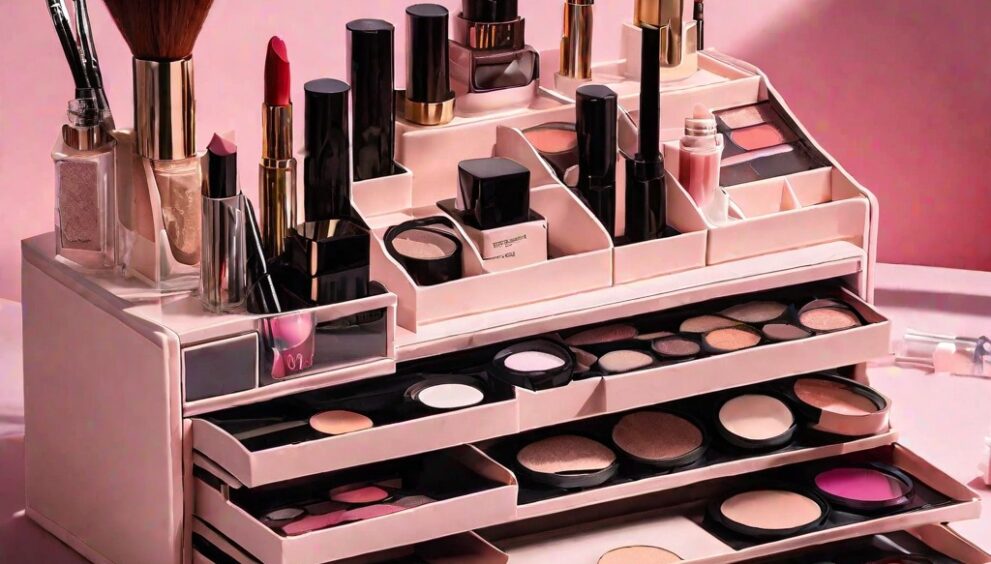How to Ensure the Quality of Your Cosmetics Packaging Purchase?

In the highly competitive world of cosmetics, packaging plays a crucial role in attracting customers and ensuring product quality. The way a cosmetic product is packaged not only affects its visual appeal but also impacts its efficacy, safety, and shelf life. Therefore, it’s essential for cosmetic manufacturers and consumers alike to pay close attention to the quality of packaging materials and design. In this article, we will delve into the various aspects to consider to ensure the quality of your cosmetics packaging purchase.
1. Material Selection Cosmetics Packaging:
The first step in ensuring the quality of cosmetics boxes is selecting the right materials. Different cosmetic products require different packaging materials based on their properties and ingredients. For example, sensitive skin care products may require packaging that offers better protection against light and air exposure, while makeup products may need containers that are easy to dispense and travel-friendly.
2. Durability and Stability:
Cosmetics boxes should be durable enough to withstand handling during transportation and daily use. Fragile packaging not only risks damage to the product but also compromises its quality and safety. Stability is equally important, especially for liquid or semi-solid products, to prevent leaks or spills that can lead to contamination or product wastage.
3. Functionality and User Experience:
A well-designed cosmetics packaging should be functional and enhance the overall user experience. Ease of opening, closing, and dispensing the product is crucial for customer satisfaction. Additionally, ergonomic design elements can make the packaging more user-friendly, especially for products that require precise application, such as mascara or lip gloss.
4. Seal integrity:
Proper sealing is essential to maintaining the integrity and freshness of cosmetic products. Tamper-evident seals not only assure customers of product safety but also prevent unauthorized access and tampering. Manufacturers should invest in high-quality sealing technologies to prevent leakage and contamination throughout the product’s shelf life.
5. Compliance with Regulations:
Cosmetics boxes must comply with regulatory standards and requirements to ensure consumer safety. This includes using approved materials that are free from harmful chemicals and toxins. Additionally, packaging must provide accurate labeling with essential information such as ingredients, usage instructions, and expiration dates.
6. Environmental Sustainability:
With increasing awareness of environmental issues, consumers are demanding more sustainable packaging options. Eco-friendly materials such as biodegradable plastics, recyclable glass, and compostable paper are gaining popularity in the cosmetics industry. Choosing sustainable packaging not only reduces environmental impact but also enhances brand reputation and consumer loyalty.
7. Brand Identity and Aesthetic Appeal:
Packaging plays a significant role in conveying the brand identity and attracting customers’ attention on crowded shelves. The design, color, and typography should align with the brand’s image and target audience preferences. Investing in unique and visually appealing packaging can differentiate a brand from its competitors and create a memorable impression on consumers.
8. Compatibility with Product Formulation:
The packaging should be compatible with the formulation of the cosmetic product to ensure stability and efficacy. Certain ingredients may react with packaging materials, leading to contamination or degradation of the product. Compatibility testing is essential to identify any potential interactions between the product and packaging components.
9. Supplier Reputation and Reliability:
Choosing the right packaging supplier is crucial in ensuring quality and consistency. Suppliers with a reputation for reliability, quality control, and ethical practices are preferred partners for cosmetic manufacturers. Conducting thorough due diligence and establishing clear communication channels with suppliers can help mitigate risks and ensure the timely delivery of high-quality packaging materials.
10. Quality Assurance and Testing:
Implementing robust quality assurance processes is essential to maintain product quality and safety standards. Regular testing of packaging materials for strength, durability, and compatibility ensures compliance with regulatory requirements and customer expectations. Manufacturers should also conduct stability testing to evaluate the packaging’s performance under various environmental conditions.
In conclusion, ensuring the quality of cosmetics boxes is essential for maintaining product integrity, safety, and customer satisfaction. By considering factors such as material selection, durability, functionality, regulatory compliance, sustainability, brand identity, formulation compatibility, supplier reliability, and quality assurance, cosmetic manufacturers can make informed decisions and deliver superior packaging solutions that meet consumer needs and expectations. Ultimately, investing in high-quality packaging not only protects the product but also enhances the overall brand reputation and customer trust in the long run.


 English
English 

